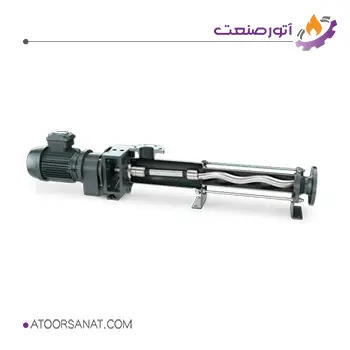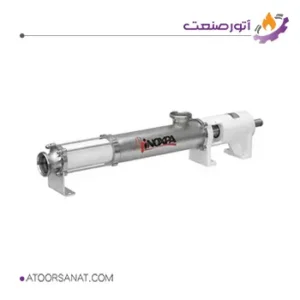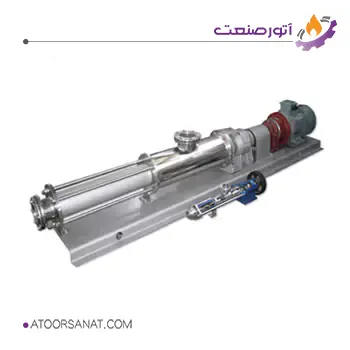Mono Pump

What is a Mono Pump or Screw Pump?
A mono pump, also known as a screw pump, progressive cavity pump, or eccentric screw pump, is a positive displacement pump used for pumping fluids with viscosities ranging from 1 to 1,000,000 centipoise, as well as fluids containing solid particles and two phases.
This pump is also known as a progressive cavity pump or eccentric screw pump. Its efficiency is between 55 and 75%, and it is most suitable for transferring viscous fluids with high flow rates and moderate pressure. Due to its unique features, this type of pump is used in many industries, including the food and wastewater industries.

Features:
- Country of Origin: Germany
- Maximum Pressure: 24 bar
- Applications: For transferring fluids with varying viscosities, adhesive materials, and shear-sensitive substances.

Features:
- Country of Origin: Spain
- Maximum Pressure: 12 bar
- Body Material: Stainless Steel

Features:
- Country of Origin: Iran
- Maximum Pressure: 20 bar
- Body Material: Stainless Steel
Mono Pump Operation
A mono pump derives its input power from an electric motor connected to a gearbox. Generally, these pumps operate at low speeds, and the reason for using a gearbox is to reduce the motor speed. The gearbox output shaft is connected to the rotor by a coupling. The mono pump rotor is made of metal and rotates inside a rubber housing. The pump housing is designed with a special geometry, so that there are cavities inside the housing that, as the rotor rotates, pump the fluid from these cavities.
The mechanism of the pump is often misunderstood. It is often assumed that this pump works by applying drag or friction force, similar to centrifugal pumps, whereas the operation of this pump is very similar to piston pumps. In this way, by confining the fluid in a cavity and pressurizing it, pumping is performed.
Due to the gap between the rotor and the housing, if the pressure exceeds a certain amount, the fluid will flow back. For this reason, the maximum pressure of this pump is limited. The amount of pressure generated in the pump depends on the number of cavities in the housing, and high pressure requires a larger number of rotors and housings connected in series. On average, each cavity generates 6 bar of pressure, which makes it possible to create 48 bar of pressure in one rotor and housing. This amount of pressure varies depending on the size and shape of the rotor, as well as other technical characteristics of the pump, so it is necessary to consult technical experts for more accurate calculations to select the most suitable mono pump.
There are different shapes and sizes for the rotor and housing of a mono pump. The following figures show some of the mono pump rotors. As you can see, the number of turns and their pitch are different.
The gap between the rotor and the housing is very small, so any fluid that is to be pumped must have lubricating properties. Also, the fluid must be within a specific temperature range when entering the pump. Large temperature changes cause the gap between the rotor and the housing to change, which can damage or wear them.
Mono Pump Components:
In the following figure, you can see some of the main components of a screw pump. However, the driving part is not shown in this figure. Some of these parts are:
- Rubber or metal housing
- Metal rotor
- Connecting rods
- Shafts
- Pins and bearings
- Washers and seals

